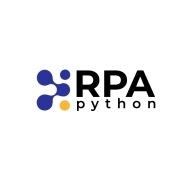


UiPath Platform and Python RPA compete in the RPA space. Despite Python RPA's strong technical capabilities and customization potential, UiPath has an advantage due to its extensive support and ease of use.
Features:UiPath Platform provides a comprehensive suite of automation tools, pre-built components, and an intuitive interface, catering to both technical and non-technical teams. It supports extensive integrations for productivity enhancements. Python RPA allows custom automation tailored to organizations with strong programming capabilities, providing script-based control for specialized processes and deeper customization.
Ease of Deployment and Customer Service:UiPath's deployment options are varied and streamlined, facilitating quicker implementation across diverse organizational setups. It is supported by a robust customer service network that aids in smoother adoption and troubleshooting. In contrast, Python RPA requires higher technical expertise for setup, potentially delaying deployment times, and lacks the comprehensive support structure, relying mainly on community resources for assistance.
Pricing and ROI:UiPath Platform requires a higher initial investment but offers substantial ROI through scalable automation and comprehensive support. Its structured pricing model ensures visible efficiency gains. Python RPA, being open-source, has low initial costs but may incur additional expenses due to customization needs and development. Its ROI is highly contingent on organizational technical expertise and resources.
Fortra's Automate has effectively replaced the workload of an entire employee, saving us significant time and money.
It has reduced our expenditures in terms of purchasing more products and employing more technicians.
On a scale from one to ten, I would rate the ROI as nine.
It has saved about 20% to 30% of costs.
We have seen a 100% return on investment.
UiPath has reduced human error and saved employee time.
They don't always understand the processes I'm trying to implement.
I would rate the technical support as a nine out of ten because it is quite fast and courteous.
They are very responsive and have been able to resolve any issues I have encountered.
They were very helpful, addressing the issue in three hours.
Even though they are external, I can ping them on Slack and I get a response right away, so they really make it very accessible to be in touch.
He works through whatever unique internal environment scenarios we have to overcome to make sure that it's doing exactly what we need, even though we're constantly having new security measures to implement on top of it.
The scalability of Automate also scores a ten out of ten.
It is easy to increase one bot or one studio without needing to buy another orchestrator, which can be quite expensive.
Automate is stable for my needs and is highly scalable, allowing the same workflow to serve numerous tasks effectively.
The solution is capable of scaling with just a few clicks.
The scalability of the UiPath Platform rates a ten out of ten.
From a technical standpoint, it's essential to make the right technical decisions and design a scalable solution.
The stability of the solution is a ten out of ten.
For stability on a scale from one to ten, I would give it a solid nine.
It has very robust features, and it is not prone to instability.
Overall, there was only one instance of downtime in four years, which did not create any significant impact.
I have not experienced any downtime, crashes, or performance issues.
Over six years, we have created zero support cases with UiPath.
This is a significant concern, especially with critical workloads where visibility into errors is essential.
My major recommendation would be for easier upgrade paths between major versions.
When new employees join our company, we created automation so they receive AWS credentials and all their AWS access and cloud access.
Adding more AI could help in small tasks that require intelligence or machine learning, leading to the next stage of automation.
If the UI changes or a label is changed, sometimes the whole flow breaks.
Regarding additional functionality for UiPath, I believe that additional features will only come into play when you start talking to the customers, accept feedback, and work on it.
Competitors are often more expensive than Automate.
It offered what we wanted at a good, competitive price.
It does a lot but also costs a lot.
Most of the UiPath products are priced higher than competitors.
The cost can be a barrier in Hungary, making it difficult for me to persuade others to invest, especially when unattended robots come at a significant price point.
When compared to competition, such as Microsoft's Power Automate platform or IBM Cloud Pak, UiPath is expensive.
Automate's non-reliance on additional orchestrators makes it quite cost-effective.
In my opinion, the best feature Automate offers is the scheduling.
Automate's compatibility with existing IT infrastructure has impacted our business operations positively by providing smooth integration with other software that we use, such as Gmail, Jira, and Microsoft 365 apps, which gives us a unified platform instead of having to keep switching from one software to another, saving a lot of time and streamlining the whole workflows.
The tool has a noticeable ROI, and the investment is worth every penny as it reduces tedious tasks and improves scalability.
Our use of automation sped up the process of getting paid from insurance companies, saving us substantial amounts of money.
Whenever they release a product, they also release a course in UiPath Academy. So, you can get familiarized with the product and understand the new capabilities.
| Product | Market Share (%) |
|---|---|
| UiPath Platform | 14.2% |
| Fortra's Automate | 2.5% |
| Python RPA | 1.6% |
| Other | 81.7% |


| Company Size | Count |
|---|---|
| Small Business | 24 |
| Midsize Enterprise | 10 |
| Large Enterprise | 7 |
| Company Size | Count |
|---|---|
| Small Business | 249 |
| Midsize Enterprise | 143 |
| Large Enterprise | 665 |
Fortra's Automate offers a user-friendly platform for task automation, featuring a drag-and-drop interface that aids in scheduling, file management, and integrating with services like Azure and AWS.
Fortra's Automate provides substantial ease in automating complex tasks through its intuitive design. It offers seamless integration capabilities, especially with Azure and AWS, and comes equipped with strong error handling. Cost-effective and requiring minimal coding, it supports a broad range of industries by effectively automating tasks such as HR operations, invoice management, and data processing across servers.
What features stand out in Fortra's Automate?
What benefits should users consider in reviews?
In industries such as healthcare and transportation, Fortra's Automate facilitates the automation of client management, HR operations, and data processing, boosting efficiency. Banks utilize it for managing extensive invoice workflows, while distribution sectors rely on its capabilities for insurance checks and system support. Its applicability across servers makes it a valuable tool for any sector seeking to reduce manual workload and improve task accuracy.
Python RPA leverages the power of Python to automate repetitive tasks and workflows, offering a flexible and scalable solution. It's designed for integration across business processes, aiming to enhance efficiency and operational productivity with its versatile capabilities.
Python RPA is employed by businesses to streamline operations, reduce manual workload, and achieve cost savings. Combining Python's robust programming capabilities with automation, it appeals to companies looking to enhance their technology stack. Python RPA's strengths lie in its open-source nature that allows easy customization and a vast library of resources supporting automation tasks. This solution supports a wide range of applications, enabling seamless integration into existing systems and promoting innovation.
What are the key features of Python RPA?Python RPA finds applicability in industries like finance for transaction processing, healthcare for patient record management, and manufacturing for supply chain automation. Its adaptability allows companies to fine-tune the tool to sector-specific challenges, ensuring that automation objectives align with business goals.
UiPath Platform is appreciated for its user-friendly interface and extensive automation capabilities, offering seamless integration with diverse applications. Its intuitive drag-and-drop functionality enables users to design efficient workflows with minimal technical expertise.
UiPath Platform delivers a robust set of features that enhance automation and productivity. With components like Orchestrator, task management is optimized, facilitating better scalability. Users benefit from advanced AI and document understanding tools, boosting data handling accuracy and reducing errors. Despite its strengths, UiPath faces challenges with upgrading processes, AI enhancements, and user documentation. Integration and selector sensitivity issues, along with support and licensing complexities, highlight areas for potential improvement. Users request smoother deployment, error handling, and migration processes. Enhanced support for RHEL/Ubuntu, LINQ, and Lambda and improved real-time insights, automation recording, and scheduling are desired. Streamlining the experience for non-technical users with simplified workflows remains a priority.
What are the key features of UiPath Platform?
What benefits should users look for in reviews?
UiPath Platform is widely implemented across sectors such as finance, healthcare, insurance, HR, IT, and supply chain to automate repetitive business tasks. Common uses include automating data entry, invoice processing, document management, report generation, and customer service operations. Organizations value the platform's ability to integrate seamlessly with systems like SAP, CRM, and Oracle, allowing for enhanced efficiency and accuracy in processing both structured and unstructured data.
We monitor all Robotic Process Automation (RPA) reviews to prevent fraudulent reviews and keep review quality high. We do not post reviews by company employees or direct competitors. We validate each review for authenticity via cross-reference with LinkedIn, and personal follow-up with the reviewer when necessary.